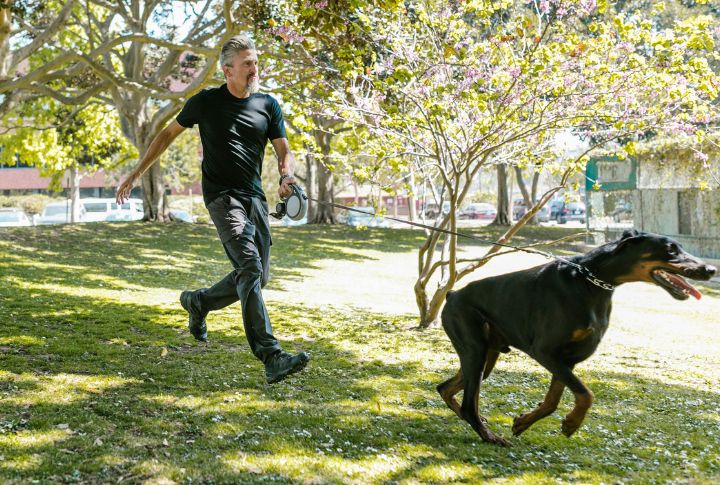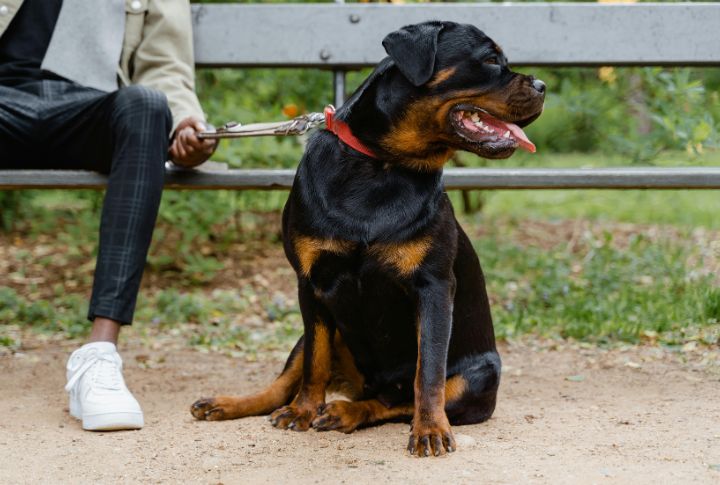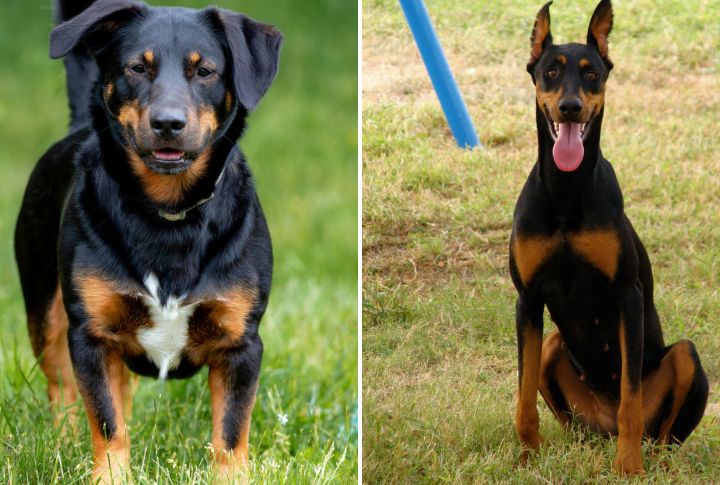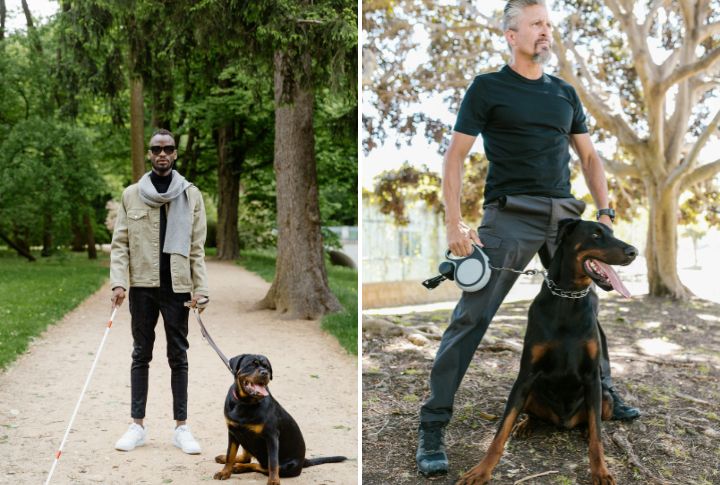15 Ways Rottweilers and Dobermans Differ as Guard Dogs

Rottweilers and Dobermans are highly intelligent, making them exceptional guard dogs. Both are renowned for their loyalty and defensive nature, but they both bring distinct traits to the role. While they excel at safeguarding families, their unique characteristics suit different environments. Here are 15 key differences between these powerful, vigilant breeds.
Physical Strength

Rottweilers take the mantle of strength as they are stocky and powerful, with a muscular build that exudes might. Their sheer strength allows them to handle physically demanding tasks with ease. This breed excels in situations that require powerful guardianship to add an extra layer of safety. If strength tops your list, the Rottweiler won’t disappoint.
Speed and Agility

In a race between Dobermans and Rottweilers, Dobermans win. They are renowned for their agility and lightning-quick reflexes. Their sleek, athletic frame allows them to maneuver swiftly in tight situations. If you’re looking for a dog that can combine protection with swift action, the Doberman’s speed makes them a highly effective defender of your home.
Intelligence and Training Ease

Both breeds are incredibly intelligent, but Dobermans tend to excel in obedience training slightly faster. Compared to Rottweilers, this breed’s sharp mind responds quickly to commands, which makes them highly trainable. Dobermans have an edge here if you prefer a dog that learns commands swiftly and stays eager to please.
Loyalty and Family Bonds

Dobermans and Rottweilers are both fiercely loyal, but Rottweilers are especially recognized for their strong attachment to their families. Thriving in close-knit relationships, they excel as companions, particularly with children. Dobermans also develop strong bonds, but a Rottweiler might be the better choice when seeking a dog that will prioritize family.
Protective Instincts

Strong guarding instincts define Rottweilers, making them naturally vigilant protectors. Their history as working dogs enhances their ability to sense danger, remain cautious of strangers, and stay loyal to their families. Dobermans also possess protective instincts but are often more alert and vocal when identifying potential threats.
Exercise Requirements

Regular exercise is essential for most dog breeds to maintain their health and happiness. With their abundant energy, Dobermans require significant physical activity and benefit from daily runs and mental challenges. Rottweilers, though still energetic, have more moderate exercise needs and this makes them suitable for those who prefer a less demanding routine.
Temperament

Beneath their tough exterior, Rottweilers are affectionate and gentle with their loved ones. Their imposing appearance can lead to misunderstandings about their nature. In familiar settings, they remain calm and composed, while Dobermans, although loving, are more alert and quick to assess and respond to their surroundings.
Size and Appearance

Both Rottweilers and Dobermans are large breeds, with male Dobermans standing 26 to 28 inches tall and Rottweilers averaging 24 to 27 inches. Rottweilers are heavier, typically weighing 95 to 135 pounds, compared to Dobermans’ 75 to 100 pounds. Their body structures differ, with Rottweilers appearing stockier and Dobermans more athletic.
Grooming Needs

Grooming both breeds is relatively straightforward, thanks to their short coats. Rottweilers have a double coat that benefits from weekly brushing, especially during shedding seasons. In contrast, Dobermans require minimal grooming, needing only a weekly brush. Regular ear checks and nail trims are essential for both breeds to ensure comfort.
Lifespan and Health

Dobermans generally live longer, with an average lifespan of 10-12 years, while Rottweilers typically live around 9-10 years. While generally healthy, Dobermans can face issues like bloat and genetic conditions such as hip dysplasia and dilated cardiomyopathy. Similarly, Rottweilers require testing for hip dysplasia and other health concerns.
Barking Tendencies

When it comes to alerting you of strangers or potential threats, Dobermans are more likely to bark. Rottweilers tend to be quieter than Dobermans but bark when necessary—especially when sensing danger or protecting their territory. Their vigilance and attentiveness make both breeds quick to respond with vocal warnings.
Family Compatibility and Dynamics

Rottweilers and Dobermans make lovely family companions when trained and socialized early. Rottweilers are known for their gentle and patient nature with children, often acting as protective siblings. In contrast, Dobermans are energetic and playful, thriving with older kids who can keep up with their spirited antics and need for mental and physical stimulation.
Working History

With ancient roots tracing back to ancient Rome, Rottweilers descended from large mastiffs used for herding and guarding livestock in Rottweil, Germany. Karl Friedrich Louis Dobermann developed Dobermans in the late 19th century for personal protection. While Rottweilers serve as historical protectors, Dobermans emerged as modern, versatile guardians.
Socialization

Highly social, Rottweilers flourish with family interaction and can experience separation anxiety if left alone for too long. In contrast, Dobermans are more adaptable and handle solitude better. They both benefit significantly from early socialization, ensuring they develop positive behaviors and become confident companions in various situations.
Adaptability to Different Lifestyles

Adaptable and versatile, Dobermans excel in active, fast-paced environments that make them great companions for those always on the go. Meanwhile, Rottweilers enjoy both energetic activities and relaxed settings and can thrive in various living situations as long as they have enough physical activity and mental exercises to keep them happy.





